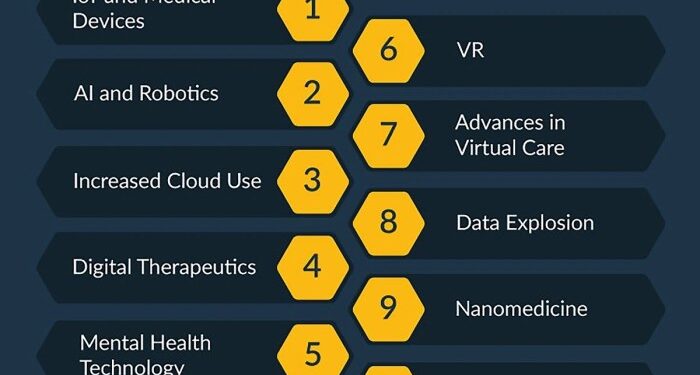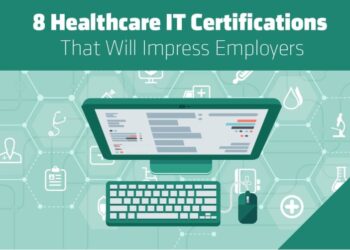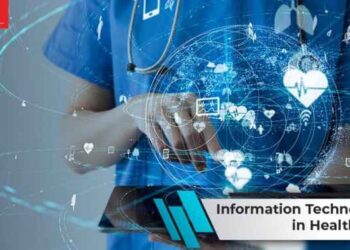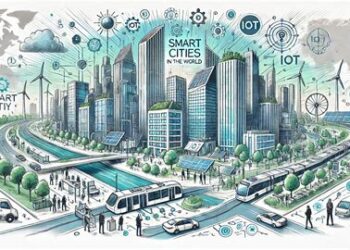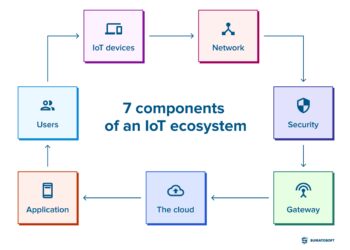Future of Health Information Technology: What Experts Predict sets the stage for this enthralling narrative, offering readers a glimpse into a story that is rich in detail and brimming with originality. The topic delves into the current landscape, emerging trends, impact on patient care, challenges, and opportunities in health information technology.
Overview of Health Information Technology
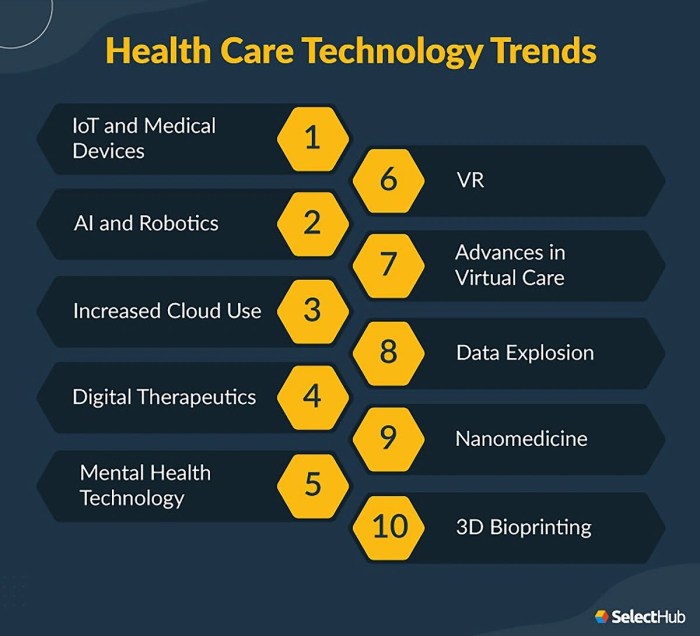
Health Information Technology (HIT) plays a crucial role in the modern healthcare landscape by revolutionizing the way patient information is managed, stored, and shared. It encompasses a wide range of technologies and systems that help healthcare providers deliver efficient and effective care to patients.
Current Landscape of Health Information Technology
Healthcare organizations are increasingly adopting electronic health records (EHRs) to digitize patient information and streamline processes. Telehealth services have also gained prominence, allowing patients to access care remotely. Additionally, wearable devices and mobile health apps enable individuals to monitor their health and share data with healthcare providers in real-time.
Key Technologies Driving Advancements in the Health Sector
- Artificial Intelligence (AI) and machine learning are being used to analyze large volumes of healthcare data and improve clinical decision-making.
- Blockchain technology is enhancing the security and interoperability of health data, ensuring its integrity and accessibility.
- Internet of Things (IoT) devices are connecting medical devices and systems to enable remote monitoring and personalized care.
Importance of Health Information Technology in Modern Healthcare Systems
Health Information Technology plays a vital role in enhancing patient outcomes, reducing medical errors, and improving overall healthcare quality. By facilitating seamless communication among healthcare providers and enabling data-driven insights, HIT promotes efficiency and innovation in the delivery of care.
Embracing these technological advancements is crucial for healthcare organizations to adapt to the evolving demands of the industry and provide patient-centered care.
Emerging Trends in Health Information Technology
Health information technology is constantly evolving, with new trends shaping the future of healthcare. Let's explore some of the latest developments in this dynamic field.
Telemedicine and Telehealth Services
Telemedicine and telehealth services have gained popularity, especially in light of the COVID-19 pandemic. These technologies allow patients to receive medical care remotely, ensuring access to healthcare services without the need for in-person visits.
Blockchain Technology in Healthcare
Blockchain technology is being increasingly adopted in healthcare for secure data sharing and management. It enables the secure transfer of sensitive patient information, ensuring data privacy and integrity.
Wearable Health Technology
Wearable devices, such as smartwatches and fitness trackers, are revolutionizing healthcare by enabling individuals to track their health metrics in real-time. These devices can monitor vital signs, activity levels, and even detect potential health issues.
AI and Machine Learning in Health Information Management
Artificial intelligence (AI) and machine learning are transforming health information management by analyzing vast amounts of data to improve patient outcomes. These technologies can identify patterns, predict disease progression, and personalize treatment plans based on individual data.
Impact of Health Information Technology on Patient Care
Health information technology plays a crucial role in enhancing patient care by improving efficiency, accuracy, and communication in healthcare settings. Electronic health records (EHRs) and telemedicine are just a few examples of how technology is transforming the patient-provider relationship and overall healthcare outcomes.
Electronic Health Records (EHRs) Improving Healthcare Outcomes
Electronic health records (EHRs) have revolutionized the way patient information is stored, accessed, and shared among healthcare providers. By digitizing patient records, EHRs enable quick and secure access to vital health information, leading to better coordination of care and more informed clinical decisions.
This results in improved healthcare outcomes, reduced medical errors, and enhanced patient safety
Telemedicine and Remote Monitoring Transforming Patient-Provider Interactions
Telemedicine and remote monitoring technologies have significantly expanded access to healthcare services, particularly for patients in remote or underserved areas. Through telemedicine, patients can consult with healthcare providers virtually, receive medical advice, and even monitor chronic conditions from the comfort of their homes.
This not only improves patient convenience but also enhances the efficiency of care delivery, leading to better health outcomes and increased patient satisfaction.
Challenges and Opportunities in Health Information Technology
In the realm of health information technology, there exist both challenges and opportunities that shape the landscape of healthcare delivery. These factors play a crucial role in determining the success and efficacy of implementing technology-driven solutions in the healthcare sector.
Challenges Faced in Implementing Health Information Technology Systems
- Interoperability issues among different health systems and software platforms.
- High implementation costs and financial constraints for healthcare facilities.
- Resistance to change among healthcare professionals and staff members.
- Data security and privacy concerns regarding the protection of sensitive patient information.
- Lack of standardized procedures and protocols for sharing and utilizing health data.
Opportunities for Leveraging Technology to Overcome Healthcare Obstacles
- Integration of telemedicine and remote monitoring technologies to improve access to care.
- Utilization of artificial intelligence and machine learning algorithms for data analysis and predictive analytics.
- Implementation of electronic health records (EHRs) to streamline patient information management.
- Expansion of wearable health devices and mobile health applications for personalized healthcare.
- Development of population health tools to address public health challenges and disparities.
The Importance of Cybersecurity in Protecting Health Data in a Digital Era
-
Cybersecurity measures are essential in safeguarding patient information from data breaches and cyber attacks.
- Adherence to strict compliance regulations such as HIPAA to ensure the confidentiality and integrity of health data.
- Implementation of encryption protocols and secure authentication methods to prevent unauthorized access to sensitive information.
- Ongoing training and awareness programs for healthcare staff to enhance cybersecurity practices and risk mitigation strategies.
- Collaboration with cybersecurity experts and organizations to stay updated on emerging threats and vulnerabilities in the digital healthcare environment.
Closing Notes
In conclusion, the future of health information technology holds immense promise and potential for revolutionizing healthcare as we know it. With advancements in technology and the integration of innovative solutions, the possibilities are endless in shaping a more efficient and patient-centric healthcare system.
FAQ Compilation
What are some key technologies driving advancements in the health sector?
Some key technologies include electronic health records (EHR), telemedicine, artificial intelligence (AI), and wearable health devices.
How does health information technology enhance patient care?
Health information technology improves patient care through better access to medical records, streamlined communication among healthcare providers, and personalized treatment plans.
What challenges are faced in implementing health information technology systems?
Challenges include interoperability issues, data security concerns, staff training requirements, and financial constraints.

